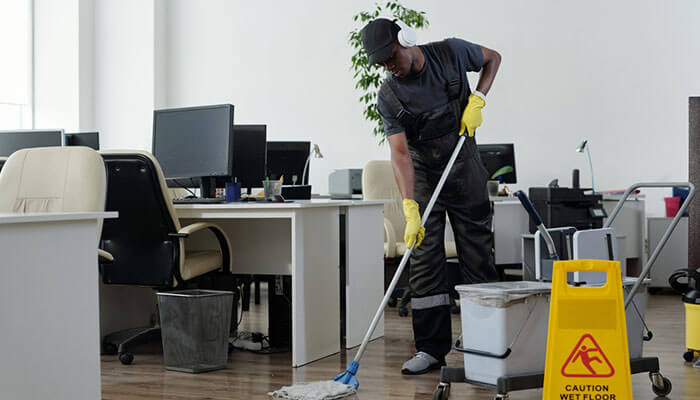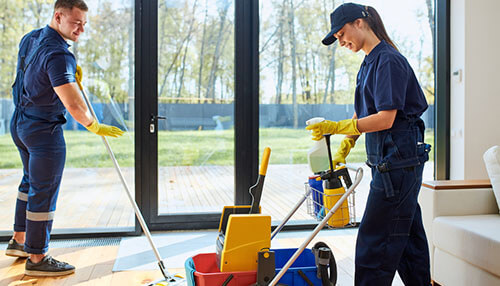A clean and well-maintained space inspires creativity, increases productivity, and creates the illusion of calm and organization. Every area, be it at home or work, has to be adequately maintained to achieve all these. Routine cleaning inspection can assist with this. The measures outlined will be critical to maintaining the hygienic state of your organization.
Many organizations believe that cleanliness does have a direct impact on the work output of their employees. For this reason, cleaning services in the United States continue to flourish. In 2022, the country’s market size for cleaning services reached a staggering USD$100 billion.
The Benefits Of Routine Cleaning Inspection
A routine cleaning inspection provides a structure for your establishment so that you can follow the standard procedures at the specific date and time they should be accomplished. A routine is simply a cycle of actionable steps, much like a fixed program you need to follow so you don’t miss anything.
A standard cleaning cycle is crucial for any establishment that employs people, whether in small or large numbers. The standard of care of the employer must be apparent. That way, your employees know that they are cared for and that their welfare is essential to the company.
A quick online search with geographical tagging can give good results if you need top-to-bottom cleaning services. Just make sure you vet the service’s credibility, so no money will be wasted. Investing in this aspect will benefit your organization in many ways, including the following:
- Improve the wellness of anyone working in the establishment
- Increase the productivity of employees
- Inspire creativity
- Instill discipline among employees
- Enforce consistency
- Create better optics
To ensure that the establishment adheres to the required cleanliness standards, you must implement a routine inspection. To do this, you may follow these steps:
1. Create A Map For Routine Cleaning Inspection
If you have a massive area, you must create a detailed map so that you don’t miss out on sites that are often missed. If your establishment consists of several floors, there may be sections that can be overlooked. Count the restrooms and lounge areas, and don’t neglect the fire exits. Frequently used facilities like the pantry have essential appliances that need a thorough cleaning for safety, such as refrigerators and coffee machines; i must include this in the map.
2. Make A Checklist
After carefully mapping out your establishment, create a detailed checklist of each room and be as thorough as possible. In each section, you can include subsections to ensure you don’t overlook anything.
Some offices may have several conference rooms, and each room may have different fixtures. Some are carpeted; others aren’t. Some have a built-in library, while others have audio-visual equipment. All of these must be considered in your list so that proper accounting can be done and nothing will be lost during the cleaning process.
3. Assign A Specialist
To lessen the burden on your shoulders, you can assign a specialist or hire one to inspect specific areas depending on the size of the place to be maintained. In some small organizations, this task is rotated among employees so each one can be responsible for the state of the workplace. This approach increases each team member’s accountability and sense of ownership.
4. Implement Corrective Action
Once you have established the cleanliness standards in your establishment, you must ensure that everyone adheres to them. If anyone does not positively contribute to the cleanliness of the workplace or even add to the unsanitary conditions, they must be punished. Corrective action can be given to those who deliberately sabotage the place’s cleanliness.
Each team member should be held accountable for their actions because unsanitary conditions can affect the entire team’s health. Examples would be spitting anywhere and pulling a prank that would result in a mess.
5. Create A Development Plan
Once you have the result of your routine cleaning inspection, you can quickly determine the areas of opportunity and weakness. With this information, you can create a development plan to address and hopefully eliminate those opportunities and weaknesses and turn them into strengths.
6. Follow Up On Your Findings
A follow-up date should anchor your development plan. It could be on the next routine cleaning inspection or after a month. This is important so that your employees know you’re serious about this matter.
Typically, after several rounds of development plans, your employees will get used to it, and cleanliness will be deeply ingrained in their core values.
Embedding this to an organization’s core values may take some time, but it will be worthwhile, especially if your establishment handles food and has direct contact with customers.
Conclusion
‘Cleanliness and order are not matters of instinct; they are matters of education, and like most great things, you must cultivate a taste for them.’ Not everyone has an eye for detail and a level of expectation for excellence. Your team’s values deeply instill cleanliness and organization, which are vital for implementation. Routine cleaning inspection can help address this. The steps provided will be essential to maintaining the sanitary condition of your establishment. This is vital, especially if you only have a bimonthly deep cleaning from a third-party contractor.




